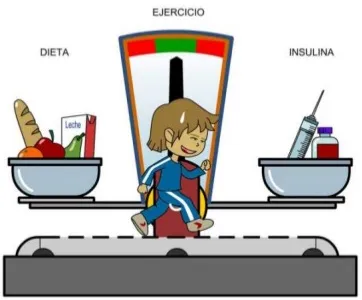Type 2 diabetes has components of genetic origin, but environmental factors weigh a lot.This is corroborated by the lack of presence of diabetes in twins.
But, both the prevalence of diabetes and glucose intolerance increase with age.In fact, each of these processes affects approximately 10-20% of subjects over 65 in many western countries.Most of these are diagnosed from 40 years, the highest frequency of appearance at 60 corresponding.
In this context, women take the worst part and the lower their socioeconomic level, the greater the probability of developing type2 diabetes and having a worse control of it.To this we must add the greatest risk of complications.
We must also take into account, as confirmed by some epidemiological studies, which there is an important difference in the prevalence of diabetes 2 between the different populations and ethnic groups.These can be explained, in part, by underlying differences in certain environmental risk factors.
As for risk factors, it is worth highlighting the important role that obesity exerts in the DM2 that is revealed by the correlation between the degree of overweight in different countries and the frequency of this disease.About 80% of type 2 diabetics are obese.The risk of developing the disease progressively increases both in men and women as the degree of overweight increases, phenomenon due, at least, to the decrease in insulin sensitivity.In addition, the greatest risk of diabetes is associated with central obesity, in which fat is deposited at the subcutaneous and intra -abdominal level.
physical activity
Therefore, it is important to combat sedentary lifestyle and initiate, maintain or increase regular and maintained physical activity.The amount is not so important but the constancy in its maintenance, in the regularity in its activity.
Nor should we forget the handling of other factors such as hypertension and dyslipidemia.With respect to the first, the guides recommend using IECAS and/or ARA II to achieve tension objective below 135/85.Regarding dyslipremia, diabetes is considered a primary risk factor and is equivalent to the cardiovascular event, so it is recommended to lower LDL below 100. Diet and exercise is essential and especially in diabetic patients with dyslipipemia there is a predominanceof small and dense LDL particles.
We must not forget smoking, since it has been proven that quitting smoking decreases macro and microvascular complications of diabetes.
sedentary lifestyle
For better disease management, we must also face sedentary lifestyle.If the diabetic population exercised routinely, the risk of premature death, death due to heart disease or stroke, which represent a third of mortality, would be reduced.Reduces up to 50% the risk of cardiovascular diseases, type 2 diabetes or colon cancer.In addition, it helps prevent arterial hypertension, the appearance of osteoporosis, decreasing up to 50% the risk of suffering a hip fracture.To all this we must add that provides psychological well -being, reduces stress, anxiety, depression, feelings of loneliness and helps control weight by reducing the risk of obesity by up to 50%.
With respect to alcohol, specialists remember that it is absorbed and metabolized in the liver.There, it hinders the ability to transform glycogen into glucose, which causes a rapid decrease in blood glucose.Therefore, the main risk of alcohol intake in a person with diabetes is to suffera hypoglycemia.These are not corrected with glucagon, so the only solution is to eat and contribute sugar.In addition, there is always the risk of late hypoglycemia, which may appear up to 36 hours after having drunk.
adhesion
The stress that appears at the beginning of the disease can debut in the form of insomnia and anxiety, while in an advanced phase depression is more frequent.
Another point to keep in mind is that the low educational level entails a lower understanding of the knowledge of the disease, of the risks, of the treatments and the controls, especially in those patients who use insulin and precise self -control.At a lower educational level, worse adhesion to treatment.Therefore, the diabetological education taught by multidisciplinary team is key.Knowing the disease and its conditions ensures and anticipates the patient to better understand their pathology.
For the elaboration of this article, the collaboration of the Medical Doctors of Primary Care Luis Digon Sanagustin, Emilio Jiménez Marín, Ana Cristina Navarro Gonzalvo, Teresa Pemán Muñoz and Javier Valdeperez Torrubia, of Zaragoza;Family doctors María Victoria Donet Yagüe, Juan Ignacio García Hervás, José Vicente Lozano Vidal, José Nova Álvarez and Pascual Llop use, from the Serrería II Health Center;María José Badesa Monreal, Francisco Aganzo López, Óscar Fernández Moya and Jesús Pérez-Tierra Ariño, from the José Ramón Muñoz Fernández Health Center, from Zaragoza;Alfredo Herranz Alfaro, Isidro Fo Pinilla and José Antonio Urbistondo Blasco, of the North Delicias Health Center, and Francisco Laudo Tesán, Carlos Isanta Pomar and Félix Gutiérrez Moreno, of the Bombarda Health Center.


